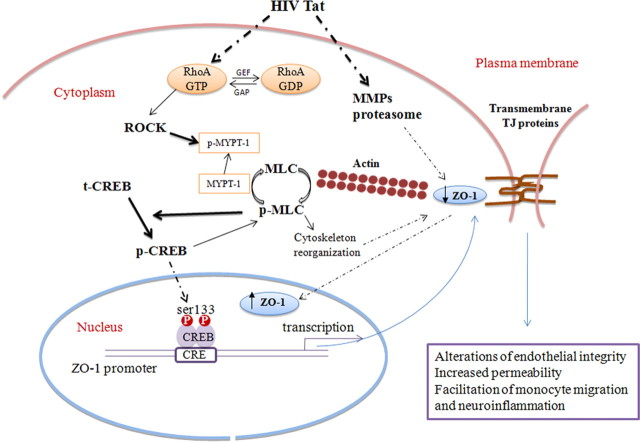Figure 7.
The proposed signaling pathway of Tat-induced nuclear localization of ZO-1 in human brain endothelial cells. HIV-1 protein Tat activates RhoA and downstream ROCK kinase, leading to phosphorylation of MLC, which then can mediate cross-linking F-actin into stress fibers and influence nuclear ZO-1 translocation. Stimulation of the Rho pathway results in phosphorylation of CREB, a transcriptional activator of ZO-1. In addition, exposure to HIV-1 or Tat protein stimulates MMPs and proteasome, which are responsible for degradation of TJ proteins, including ZO-1 (Huang et al., 2009). Nuclear translocation may protect this pool of ZO-1 against proteolytic degradation, whereas the membrane pool remains vulnerable to MMP and proteasome proteolysis. Because membrane ZO-1 is the major form of this TJ protein, its decrease results in diminished levels of total ZO-1. In addition to stimulation of CREB phosphorylation by the Rho signaling, CREB also influences activation of MLC, indicating a close crosstalk between these two signaling pathways.

